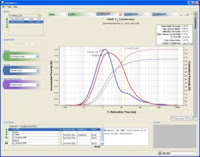 The Nebraska Natural Resource Districts (NRDs) in the Republican River Basin are just finishing up their development of required Integrated Management Plans (IMP's). IMPs were required in the Republican Basin to ensure state compliance with the Republican River Compact and it's subsequent settlement agreement. The Upper and Middle Republican NRDs have already completed their plans. It was just announced that the Lower Republican NRD sent their initial working draft in this morning. The press report can be seen here: Kearney Hub Article
The Nebraska Natural Resource Districts (NRDs) in the Republican River Basin are just finishing up their development of required Integrated Management Plans (IMP's). IMPs were required in the Republican Basin to ensure state compliance with the Republican River Compact and it's subsequent settlement agreement. The Upper and Middle Republican NRDs have already completed their plans. It was just announced that the Lower Republican NRD sent their initial working draft in this morning. The press report can be seen here: Kearney Hub ArticleWithin this press report it says:
Let me get this straight, the NRD is going to reduce the allocation - stepped down over 5 years - to the average (or just above the average?) of what has been getting used since 2005 and this represents a 20% reduction?That includes a proposal to reduce the current LRNRD groundwater irrigation allocation for all wells from 9 inches to 7.20 inches per acre in steps over five years for a total of 20 percent.
Clements said he knows the idea will concern irrigators, but it will be manageable given average irrigation water use since allocations were implemented in 2005. The range has been a high average of 7.6 inches in 2006 to a low of 5.18 inches in 2009.
The good news is that annual carry over of unused water has been eliminated. This should help, of course, but as long as the average historical use will still be available and usable, and actually more than this average can be used in the 4, intervening step-down years, I'm struggling to understand how this is a reduction of water use to meet Compact compliance? Guess I'd better get a copy of the full IMP and take a look at it. The full version (and a summary) is posted at: http://www.lrnrd.org/. As usual, this may simply be a problem with the reporting and not the report at all. I'll try and follow up on this in a bit.




















